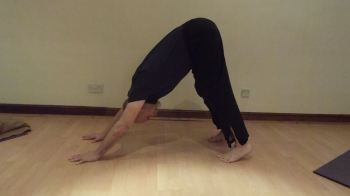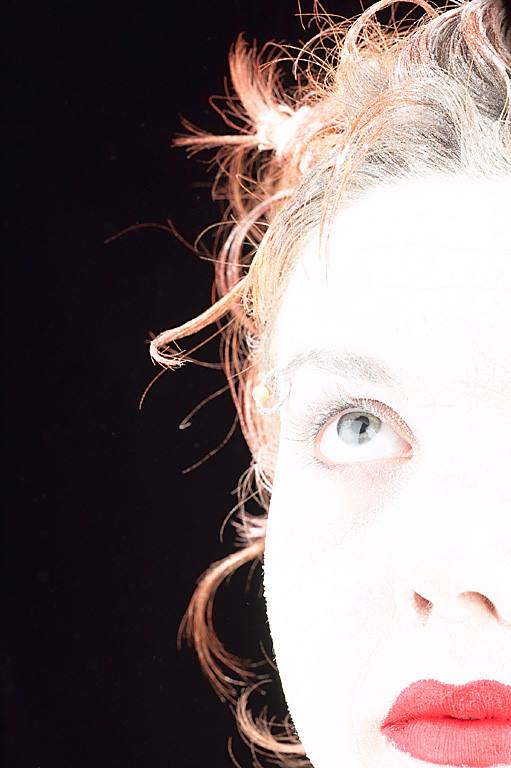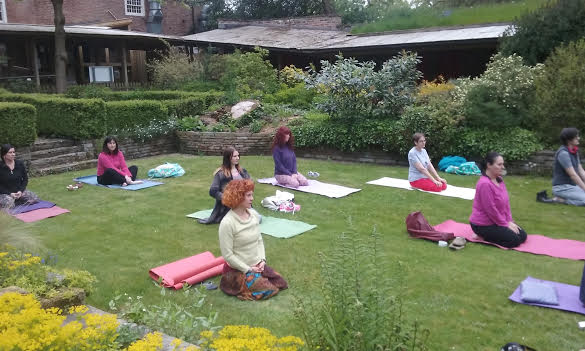Not flexible enough to do yoga? Read this!
Posted on
 It is a common misconception that you have to be flexible or flexible enough to practice yoga. In fact one of the reasons for starting yoga is to try and get more flexible. There is a saying that goes something like: "yoga will meet you where ever you are in life" In other words there are no pre-conditions or qualifications for starting to practice yoga. It's open to any body and every body. That does not mean to say that when you start or restart practicing yoga you wont at first feel a bit awkward. This is quite natural as you are not used to putting yourself into some of the unusual positions that yoga asks of you. Keep this tip in mind when you start to practice: when attempting a pose or asana, leave some room in your body for YOU as you are right now. There is another saying in yoga that goes something like this: "I've been practicing this posture for so many years now that it is in my body". This just means your body has got used to it. But when you first start it's not used to it. Daily practice will change that and begin to change YOU.
It is a common misconception that you have to be flexible or flexible enough to practice yoga. In fact one of the reasons for starting yoga is to try and get more flexible. There is a saying that goes something like: "yoga will meet you where ever you are in life" In other words there are no pre-conditions or qualifications for starting to practice yoga. It's open to any body and every body. That does not mean to say that when you start or restart practicing yoga you wont at first feel a bit awkward. This is quite natural as you are not used to putting yourself into some of the unusual positions that yoga asks of you. Keep this tip in mind when you start to practice: when attempting a pose or asana, leave some room in your body for YOU as you are right now. There is another saying in yoga that goes something like this: "I've been practicing this posture for so many years now that it is in my body". This just means your body has got used to it. But when you first start it's not used to it. Daily practice will change that and begin to change YOU.
Is yoga just about flexibility?
This can be another misconception. In fact if you spent all of you time continuously working on just your flexibility you would get weaker and weaker. Stretching to get flexible is great for improving the tone and condition of your muscles and soft tissue but you also need to balance that with strength. Many people think that yoga is a soft option. A light workout for those who can't handle real exercise. This is another misconception. Some of the "lighter" core strength asana are quite challenging even to people who are reasonably fit. Some of the more "advanced" strength asanas are very complex and can take years to master.So yoga is also about strength.
What yoga offers beyond strength and flexibility
So far I have only talked about strength and flexibility but yoga has a lot more to offer than the physical benefits. Many people especially in the West take up yoga as part of a fitness regime. They add it to their weekly programme of self improvement in the hope that it will help them look better and even sexier. I suppose there is a place in yoga in the 21st century for this kind of thinking. There are many new styles out there in the public arena and this is not such a bad thing as it means that yoga is reaching more people in many differing forms. As a contrast when we talk about people practicing meditation that can mean anything from sitting quietly once a day for ten minutes to simply be still with a view to bringing calmness to body and mind to going deeper into the depths of consciousness in the hope of discovering new realities and levels of consciousness.On the other hand what distinguishes yoga from other types of exercise is that it is really about coming to better terms with the mind through working with the body. Cultivating a greater sense of physical, mental and emotional awareness through the continual focus on bodily sensations whilst in the midst of a yoga asana. This continuing improvement of awareness is enhanced by the considered use of the breath. Breath in yoga is not simply about controlled breathing techniques although these can bring immense benefits but also a lot of good breath work is done in the midst of asana. Breathing the energy of the breath into those parts of the body you are working with.This combination of daily work with the body and breath has an indirect influence on the mind and emotions bringing about over time a greater sense of harmony, calmness and well-being. After just a few years or even months of daily yoga practice and you may one day stop and take stock of how you are feeling and think to yourself: I seem to be feeling a lot calmer about myself and my reactions to daily stresses and tensions are a lot more positive than they once were. Why is that I wonder. Then you might think, it could be my yoga and you will probably be right! Many years ago I once complained to an accomplished yoga teacher that after years of daily practice and a lot of meditation I had only experienced what I described as a quieter mind and he replied "Well if that's all you ever achieve you have been truly blessed!"
In conclusion by all means take up yoga for its gifts of flexibility, toning and strength but also look for the deeper gifts that the magic of yoga can bring. Remember that the human mind has a wonderful capacity to continually refine its ability to focus and concentrate. Yoga is a journey and not just one that moves the body but also the mind as it is also an inward journey, one of introspection. There is much to be seen in the great wide world and the universe beyond but there is also another universe in the great depths of the mind and this journey can be just as exciting.if we are patient and steady. The flexibility you gain physically will ultimately translate to the flexibility of the mind to make that journey of introspection more possible and meaningful
.Barry Todd - (HathaYogaMan)
 Logically if you decide not to eat animals for hraalth reasons then I can see nothing strange about eating 'healthier pretend' anmials.
Logically if you decide not to eat animals for hraalth reasons then I can see nothing strange about eating 'healthier pretend' anmials. It makes sense really, while you are fighting to impress you are alienating each other. If youa re able to talk things through and talk about the insecurities that you experience that make you behave the way you do, you can begins to understand each other. This trust and understanding give you support and hopefully if you keep talking and caring then you willdepend on each other for different reasons and will start to feel more confident in yourselves knowing that you have someone who cares about you. Forotunately these days more couples are talking and supporting each other emotionally and were once men couldn't talk about these things they are now able to do so.
It makes sense really, while you are fighting to impress you are alienating each other. If youa re able to talk things through and talk about the insecurities that you experience that make you behave the way you do, you can begins to understand each other. This trust and understanding give you support and hopefully if you keep talking and caring then you willdepend on each other for different reasons and will start to feel more confident in yourselves knowing that you have someone who cares about you. Forotunately these days more couples are talking and supporting each other emotionally and were once men couldn't talk about these things they are now able to do so.